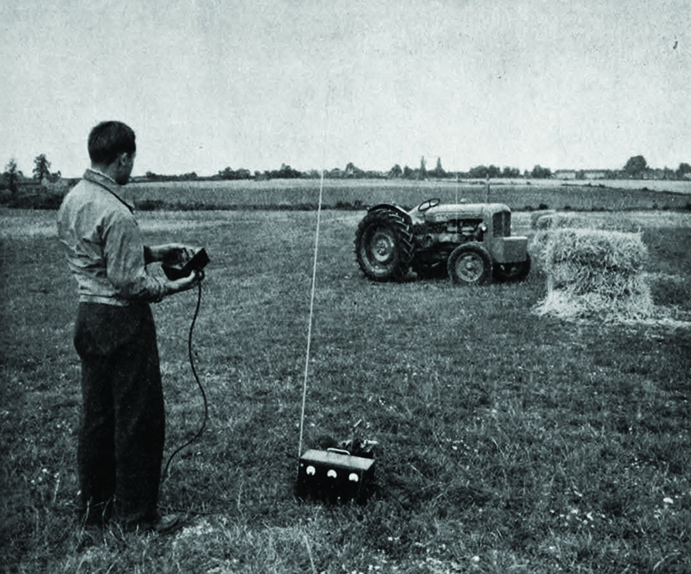Fordson tractors underwent a series of modifications during their 47 years in production, but it was a non-production version that lured one of our predecessors to a field in Surrey in October 1955.
Ford Motor Company had invited The Engineer to observe an unmanned, radio-controlled Fordson Major diesel tractor, a technology demonstrator that had been built for use in field trials. What piqued the interest of our predecessor was the potential application of radio-controlled vehicles “in the transport of fissionable material at nuclear power plants”.

Furthermore, Ford was demonstrating a vehicle modification that our reporter thought could be “a pointer to the future of mechanised farming”.
According to the report, radio control was enabled by a transmitter working at 27-12Mc (megacycles) and providing six separate – but not simultaneous – channels, by means of audio-frequency modulation of the carrier, the receiver having tuned reed output relays for the reception of individual signals. These then operated secondary relays to provide excitation from the 12V tractor battery for the solenoids connected to the tractor controls.
The transmitter and receiver were battery operated, the latter being carried in a case fixed to the side of the tractor near to the telescopic whip aerial. The operator’s control box was separate from, but attached to, the transmitter by a cable. The controls had been arranged to allow left and right steering, clutch release, implement raising and lowering, and engine stop.
The report said: “On the tractor, in association with the receiver, there was a bank of coloured lights that indicated the control functions and which provided a continuous check on the operation of the radio transmitter and receiving gear.
“The ‘engine stop’ function is also associated with a safety device, which comes into operation in the event of a failure in the transmitter or receiver. The hydraulic system, which operates at about 500lb per square inch, includes a Plessey pump installation, a five-gallon header tank fitted underneath the radiator, a Keelavite control valve and the solenoid operated by-pass valve, as well as the valves and hydraulic cylinders concerned with steering and clutch control.”
The function of the by-pass valve was to short circuit the pump when no hydraulic power was required, which reduced the amount of energy wasted during pumping. The tractor was steered by a double-acting cylinder controlled by a double-acting valve operated magnetically from the 12V tractor battery through the radio receivers output relays.
The Engineer’s reporter said that the mechanical output of the hydraulic cylinders was coupled to a point on the steering drop arm, and there were bypass taps provided so that manual steering could be resorted if required.
The clutch was controlled by a single-acting cylinder that was arranged to operate directly on the linkage between the pedal and the clutch.
“For the ‘engine stop’ control there is a solenoid with linkage direct to the lever on the fuel injection pump casing, and to provide a full measure of safety it is arranged to hold the mechanism in the running position when energised,” our reporter observed. “Normally this control is held out in the “stop” position by a spring, so that… in the event of any electrical failure either from the radio or from the battery the solenoid is de-energised and the engine stopped.
“To raise and lower the implement gear the existing control lever has been removed and the linkage connected to a motor-driven actuator. This is controlled by limit switches to provide the correct stroke and automatically centre the valve when the operating switch on the control panel is allowed to centre from the raised position, corresponding to the spring centring cam device normally fitted to the manual control.”

Red Bull makes hydrogen fuel cell play with AVL
Formula 1 is an anachronistic anomaly where its only cutting edge is in engine development. The rules prohibit any real innovation and there would be...